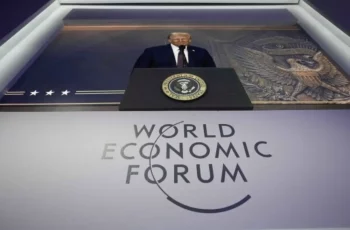
Europe is confronting a pivotal moment in migration policy. Mounting migrant flows, divergent national strategies, and rising public anxiety are testing the European Union’s solidarity and border management frameworks. From England’s Channel crossings and Greece’s sudden asylum freeze to Schengen border controls and EU-wide reform launches, recent days have underscored a continent wrestling with complexity.
On July 9, UK Prime Minister Keir Starmer and French President Emmanuel Macron advanced an “one‑in, one‑out” pilot agreement aimed at reversing small‑boat crossings in the Channel. This model transfers up to 50 migrants weekly from the UK to France, reciprocally returning an equal number with legitimate grounds to stay in Britain.
Yet the deal is contentious: Italy, Spain, Greece, Malta, and Cyprus warn it could overload entry countries. Macron emphasized cooperation rooted in humanity, solidarity and fairness, pointing instead to UK “pull factors” as part of the challenge. This initiative reflects a pragmatic Franco‑British pivot—Swapping empty rhetoric for targeted pilot measures—though its long‑term impact remains uncertain.
Meanwhile, Greece has declared a three‑month suspension of asylum application processing for sea arrivals from North Africa. Over 7,300 migrants have reached Greek shores so far in 2025, compared to 5,000 in all of 2024.
Migration Minister Manos Logothetis framed the decree as a stark deterrent: “People there need to think twice before deciding to pay a large sum of money to come to our country”. Around 500 daily arrivals on Crete led to overcapacity at temporary reception centers. The moratorium dovetails with EU demands for migration control conditional on cooperation with African transit states. This hardline posture comes at a political cost: human rights NGOs criticize restrictions on asylum as eroding EU values and legal norms, even as they acknowledge Greece’s desperation.
All the while, several EU states are reintroducing internal border controls under the Schengen Borders Code to confront “serious threats” amid migratory and security pressures. Poland has reinstated controls on its frontiers with Germany and Lithuania (July 7–August 5), citing migrant inflows. Slovenia, Spain, Italy, and Austria currently maintain temporary border checks for terrorism, smuggling, and “persistent migratory pressure”. Belgium recently announced summer border controls to stop asylum seekers denied entry elsewhere.
These measures, though legally temporary, signal growing discomfort with Schengen’s free‑movement ideals. Critics warn this could erode EU unity and exclude migrants arbitrarily—especially when linked to “mass influx” clauses with vague definitions.
Policy hardening extends to labor and family migration: the UK is updating its Skilled Worker visa list on, removing many medium‑skilled occupations and ending care‑worker recruitment and stricter English requirements and increased migration fees will debut before year’s end. These moves reflect a shift—from earlier openness to targeting migrants deemed economically beneficial or politically useful, while restricting low‑skill inflows.
On July 9, the European Migration Network (EMN) released its 2024 report. Highlights include: asylum applications fell by 13% across the EU and Norway, adoption of the Pact on Migration and Asylum, with rules due in June 2026, reinforcement of the Schengen Borders Code, Single Permit Directive, and anti‑trafficking measures.
The New Pact on Migration Asylum seeks efficiency by fast‑tracking asylum procedures, standardizing reception, and deploying “mandatory solidarity”—requiring states to host, resettle, or fund others for each migrant processed. Overall, while alignment toward an EU migration framework is clear, policymakers must balance deterring irregular migration with safeguarding human rights.
Violent and populist reactions are mounting — in Northern Ireland, an effigy of migrants on a bonfire sparked condemnation as a “vile, dehumanizing act”. In Poland, “citizen patrols” have emerged at the German border, with far‑right factions framing migration as a national invasion. Populist governments in Denmark and Belgium are intensifying border scrutiny, tapping into public fears.
Meanwhile, EU leaders from France, Germany, Greece and others are affirming support for the Pact. Yet internal fractures—especially among southern frontline states—reflect uneven burdens and political risk sharing.
Europe’s migration dilemma involves multiple fault lines:
Policy vs Capacity: Greece’s freeze reflects desperation, but pushing migrants onto mainland Europe redistributes—not solves—the crisis.
Unity vs Sovereignty: Schengen controls reflect national priorities overriding EU cohesion.
Efficiency vs Rights: The Pact may expedite returns, but ambiguous provisions risk overshadowing due process.
Deterrence vs Desperation: Measures like “one‑in, one‑out” may disrupt smuggling, but legal immigration pathways remain limited.
Experts argue that real solutions lie in root‑cause management—strengthening regional partnerships with African and Middle Eastern countries, scaling integration systems, and stabilizing Balkan and Mediterranean transit routes.
As of July 2025, Europe stands at a crossroads. Borders are being reinforced, policies hardened, and political pressure rising. However, without a comprehensive strategy—one that includes legal avenues, development partnerships, and shared responsibility—the risk is a patchwork of national fences, fraying EU solidarity, and repeating humanitarian failures.
The next year will be decisive. With the Pact rolling out in 2026, Channel pilot programs, and Schengen under strain, Europe has an opportunity: to effect structural reform or to fragment under pressure.










Comments